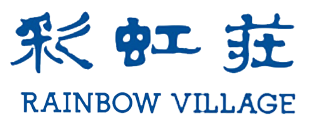-
-
-
Technology
-
Products
-
-
Contact
Main Processes in Dyeing and Finishing
1. Pretreatment
Pretreatment is the first step in the dyeing and finishing process. Its purpose is to remove impurities from the fabric and prepare it for subsequent dyeing and finishing. The main processes include:
- Desizing: Removal of sizing agents from the fabric, usually carried out through chemical or enzymatic methods.
- Scouring: Elimination of oils, waxes, and natural impurities from the fibers, typically performed under high temperature and alkaline conditions.
- Bleaching: Chemical treatment to whiten the fabric to the desired level of whiteness. Common bleaching agents include sodium hypochlorite and hydrogen peroxide.
- Mercerization: A treatment applied mainly to cotton fabrics to improve luster, strength, and dimensional stability.
2. Dyeing
Dyeing is the process of dissolving dyes in a liquid solution and allowing dye molecules to bond with the fibers, thereby imparting color to the fabric. Depending on the fiber type and dye used, common dyeing methods include:
- Reactive Dyeing: Suitable for cellulose fibers such as cotton and linen, offering good colorfastness.
- Disperse Dyeing: Mainly used for hydrophobic fibers like polyester.
- Acid Dyeing: Applicable to protein fibers such as wool and silk.
- Vat Dyeing: Involves a reduction reaction to dissolve the dye before application, commonly used for cotton fabrics.
3. Printing
Printing refers to the process of applying dyes or pigments to the fabric surface in localized areas to create patterns. Common printing methods include:
- Direct Printing: Applying dyes or pigments directly onto the fabric to form the desired design.
- Resist Printing: Applying a resist agent to certain areas of the fabric before dyeing, preventing those areas from absorbing color.
- Discharge Printing: First dyeing the fabric with a background color, then printing a discharge paste to remove color in specific areas and create patterns.
4. Finishing
Finishing involves physical or chemical treatments that enhance the fabric’s performance, making it more suitable for its intended end-use. This stage can improve properties such as softness, durability, water repellency, wrinkle resistance, flame retardancy, and aesthetic appearance.
keywords: Main Processes in Dyeing and Finishing
Related information
Add:NO. 315 BINZHONG ROAD, BINHAI INDUSTRIAL ZONE, KEQIAO DISTRICT
312000 SHAOXING , ZHEJIANG SHENG , CN-ZJ , CHINA , CN
E-mail:business@cnrbv.com
Tel:+86-575-85621721
© Zhejiang Rainbow Village Printed and Dyeing Co.,Ltd
COOKIES
Our website uses cookies and similar technologies to personalize the advertising shown to you and to help you get the best experience on our website. For more information, see our Privacy & Cookie Policy
COOKIES
Our website uses cookies and similar technologies to personalize the advertising shown to you and to help you get the best experience on our website. For more information, see our Privacy & Cookie Policy
These cookies are necessary for basic functions such as payment. Standard cookies cannot be turned off and do not store any of your information.
These cookies collect information, such as how many people are using our site or which pages are popular, to help us improve the customer experience. Turning these cookies off will mean we can't collect information to improve your experience.
These cookies enable the website to provide enhanced functionality and personalization. They may be set by us or by third-party providers whose services we have added to our pages. If you do not allow these cookies, some or all of these services may not function properly.
These cookies help us understand what you are interested in so that we can show you relevant advertising on other websites. Turning these cookies off will mean we are unable to show you any personalized advertising.


